Ideal body measurements are a concern not only for women but also for men. Women are always very interested in diet and exercise to achieve the ideal index. But what index do you want to be ideal for? Women of Asian descent will have different scores than women of African or Latino descent. Are you looking for ideal female body measurements chart? Read this article to better understand perfect measurements for a woman and ideal female measurements.
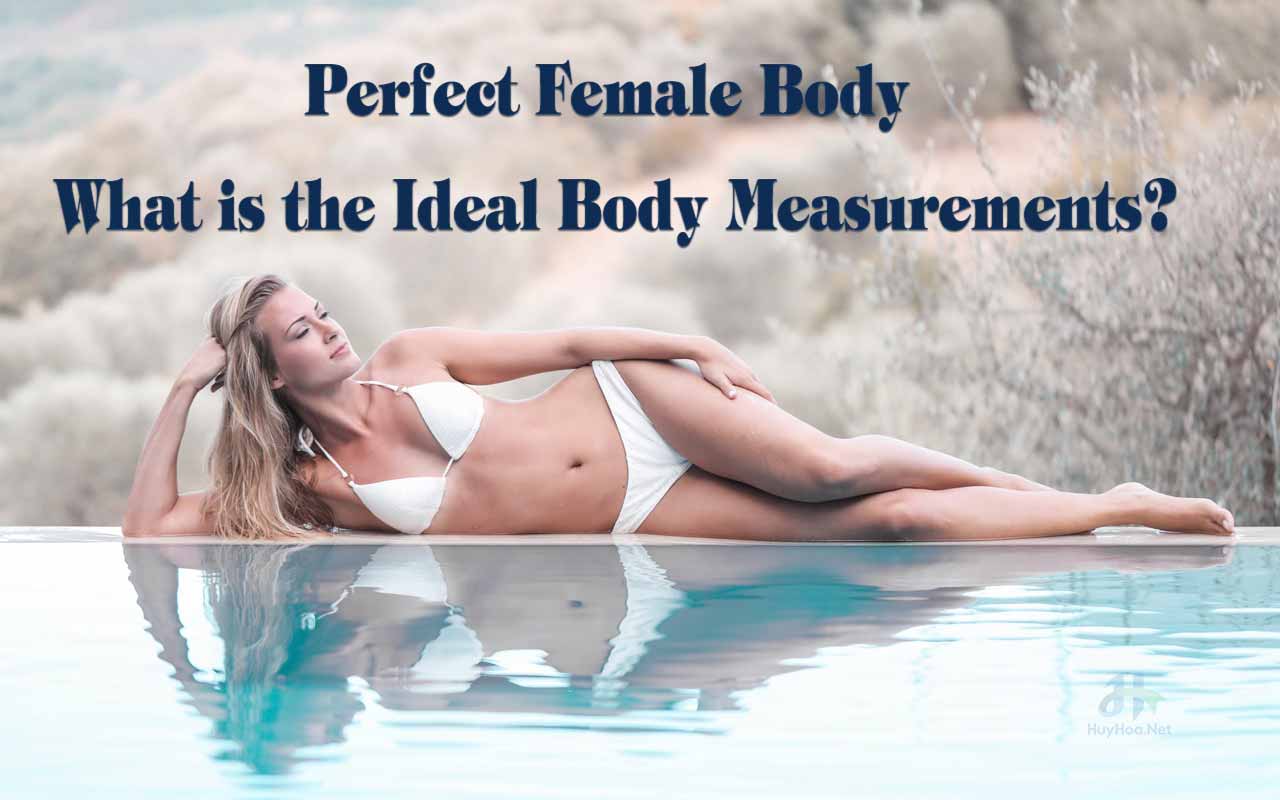
Who doesn’t want to look in shape? It is an inherent attitude of human beings to look great or have a well-carved-out physique. Especially when it comes to women, they are even more conscious about their figure because in every culture and at all times, a female had been a symbol of the highest degree of aesthetic beauty and bodily perfection.
Though the concept of the perfect female body is found in every society its definition and ingredients vary from one society to the other. E.g. in South East Asia, women having a voluminous and curvaceous bodies would fit into the definition of a perfect female body whereas.
When we talk about the West, body measurements depicting a perfect female body are quite different. They would rather prefer a lean and skinny body outlook.
However, there are some principles that underline the agreed definition of a perfect female body in almost all cultures despite differences. Before we address them, it would be better to have an understanding of what are the different kinds of a female bodies.

Table of Contents
Different Types of Female Body
A female body is usually categorized into four types which are as under:
Pear Shape:
It is characterized by wider hips as compared to the width of the bust. Fats are mainly located on the buttocks, hips, and thighs. As the fats increase, the upper part of the body, especially the abdomen gets fat distribution.
Banana Shape:
The bust and hips are wider than the waist which is mostly less than 9 inches. Fats distribution is more in the face, chest, buttocks, and abdomen. The greater percentage of androgen than estrogen in such body types, cause them to take a masculine outlook.
Hourglass Shape:
It is characterized by a narrow waist and the bust and hips are of the same width. The hourglass shape is considered to be the perfect female body shape in most societies because it shows the highest level of symmetry.
Apple Shape:
In this case, the bust and shoulder width is greater than that of the hips. Women possessing this body shape have the highest level of androgen than any other, resulting in a masculine outlook.
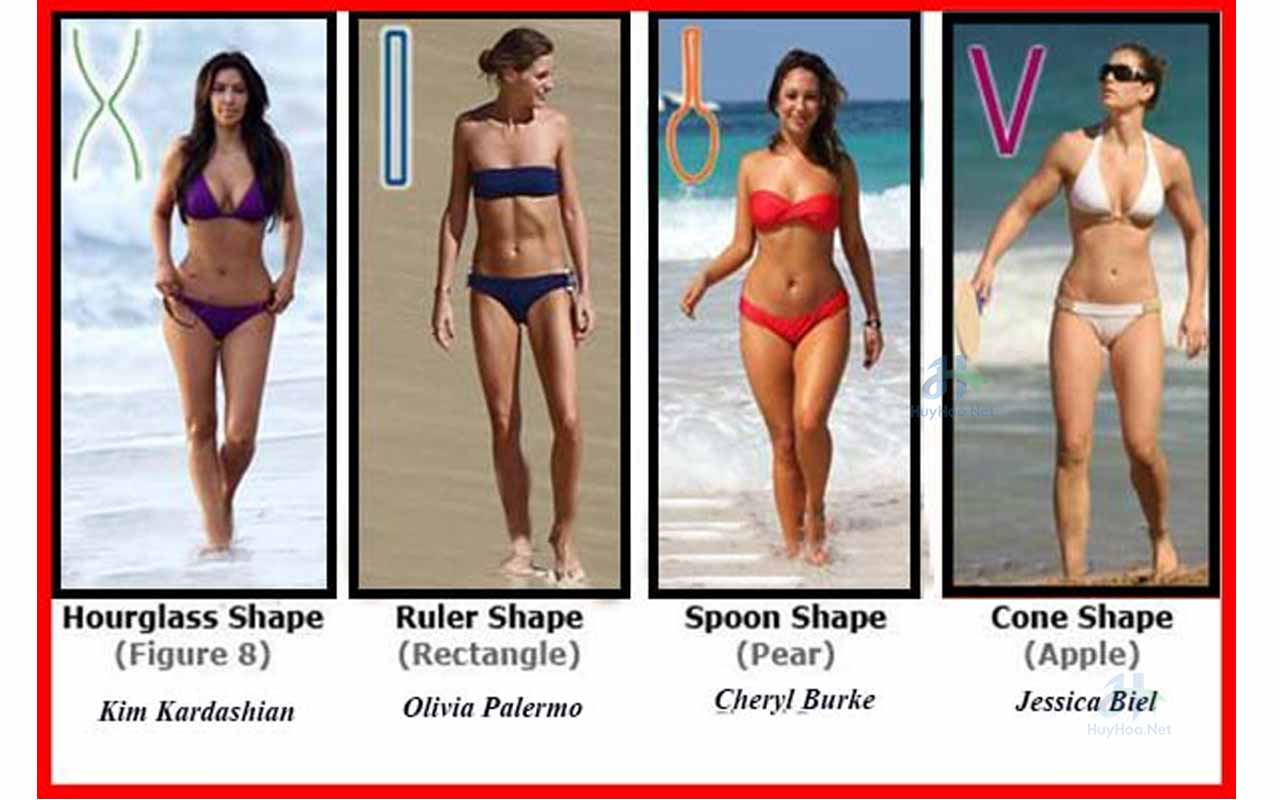
Measurements of Percent Fat
While BMI and other measurements like body fat percentage meet the needs, it’s important to remember to be active and choose the foods you eat – these are factors that affect your health. your overall health.
With that in mind, think of BMI and body fat percentage as just one way to assess and track your weight and overall body composition.
BMI-Based Body Measurement Chart for Women
You need to calculate your body mass index. This helps you to know if you are overweight or underweight. Body mass index is calculated by dividing your weight (in kilograms) by your height in meters. The body mass index table below will show you whether you need to lose or gain weight.
| BMI | Interpretation |
| BMI 18.5 to 25 | Normal or optimal weight |
| BMI > 25 | Overweight |
| BMI < 18.5 | Underweight |
| BMI < 17.5 | Extremely underweight |
| BMI = 30 or BMI > 30 | Obese |
| BMI = 40 or BMI > 40 | Morbid obesity |
You can find out how to measure BMI at this website: Calculate Your Body Mass Index
How to calculate body fat
When it comes to measuring body fat percentage, there are several methods used that are quite expensive but not very accurate. Consists of:
- Dual-energy X-ray absorptiometry (DXA)
- Hydrostatic balance
- Atmospheric Variation Measurement (Bod Pod)
- 3D body scanner
Skinfold Calipers – a method of measuring body fat with a caliper
Most of us cannot implement the methods listed above on our own. That’s why using skinfold calipers to assess body composition is so popular.
With this method, you can measure your own body fat or have a certified trainer or other trained professional take the measurements and calculate your body fat percentage.
Of the two options, having a trained expert handle the information will give a more accurate result.
ideal female body measurements chart
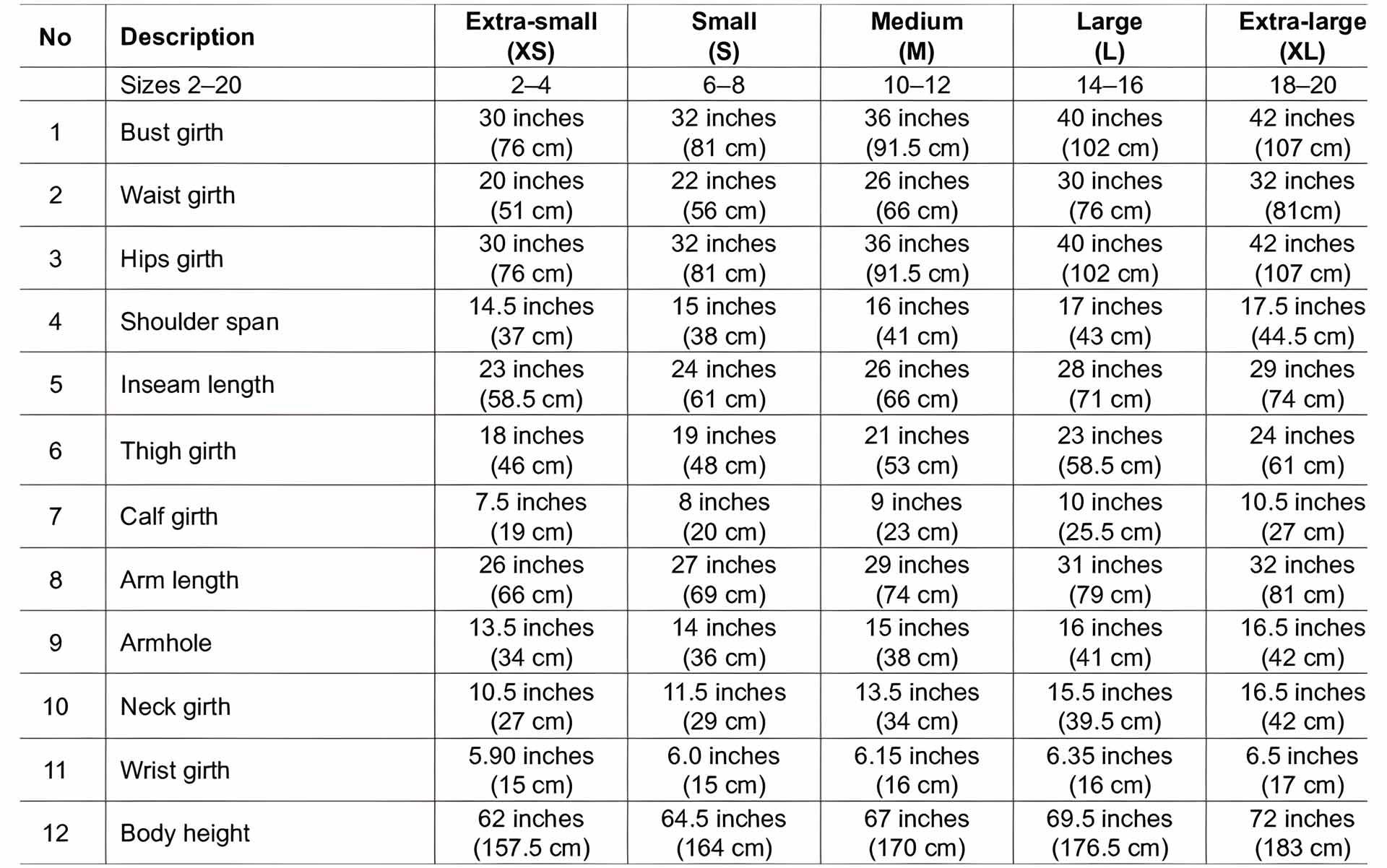
BMI calculation is based only on your height and weight, not taking into account females or malefactors. That said, there are differences between men and women when it comes to body fat percentage ranges.
Female body fat percentages fall into several different categories. Some charts will divide percentages by category, such as athlete and acceptable range, while others scale by age range.
The American Council on Athletics (ACE) has the same body fat chart as the adult BMI chart because it doesn’t factor in age and classifies it as follows:
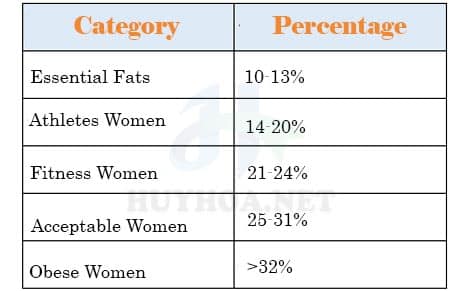
For the ideal body fat percentage based on age, Beth Israel Lahey Health Winchester Hospital offers the following guidelines for female body fat percentage:
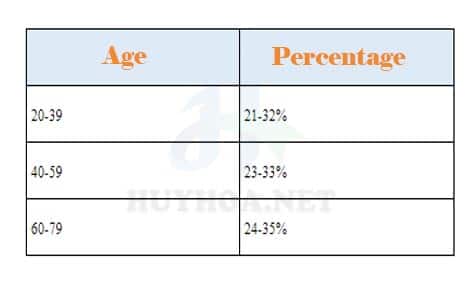
Body Fat Formula For Women:
- Step 1: Multiply total bodyweight x 0.732, then add 8.987 = Result 1
- Step 2: Divide waist measurement (at the fullest point) by 3.140 = Result 2
- Step 3: Multiply waist measurement (at naval) x 0.157 = Result 3
- Step 4: Multiply hip measurement (at fullest point) x 0.249 = Result 4
- Step 5: Multiply forearm measurement (at fullest point) x 0.434 = Result 5
- Step 6: Add Step 1 + 2, subtract Step 3, subtract Step 4 and add Step 5 = Lean Body Mass
- Step 7: Subtract lean body mass from total body weight = Body Fat Weight
- Step 8: Multiply body fat weight x 100, then divide it by total body weight = Body Fat Percentage.
How to calculate the ideal body measurements?
Classic way to measure your bust, waist, and hip
In a classical way, it is often said that the three-round measurement of women is: 36-26-36 ., respectively.
You can use a tape measure to find the measurements.
- Bust: Measure the circumference of your breast at the largest point
- Waist: The measure of the narrowest part of the torso, just above the belly button
- Hip: The measure of the broadest part of the hip where the curve is most prominent
So what if you are 1.8 meters tall, there are even people who are 1.9 meters tall. Or those who are only 1.5 meters tall? Is that measurement still accurate? Are such measurements even more balanced? Definitely not.
That’s right. But the reality will not be that simple. Sure, it’s not really like that. A lot of beautiful women don’t have such stats. Are you 5’8 tall? Changing your height is a very difficult task. But don’t worry, the body is yours and the stats are just numbers.
The way to calculate body measurements is widely applied
I remember someone asked how to calculate body measurements on Yahoo Q&A. And the best-rated and accepted answer seems to come from a classic book.
Suppose we call body mass index X
The waist-to-hip ratio is A
The waist-to-chest ratio is B
X = A/B
If X=0.8, it is considered the ideal ratio. If A=B means X=1 then this is considered an hourglass shape, an ideal female shape.
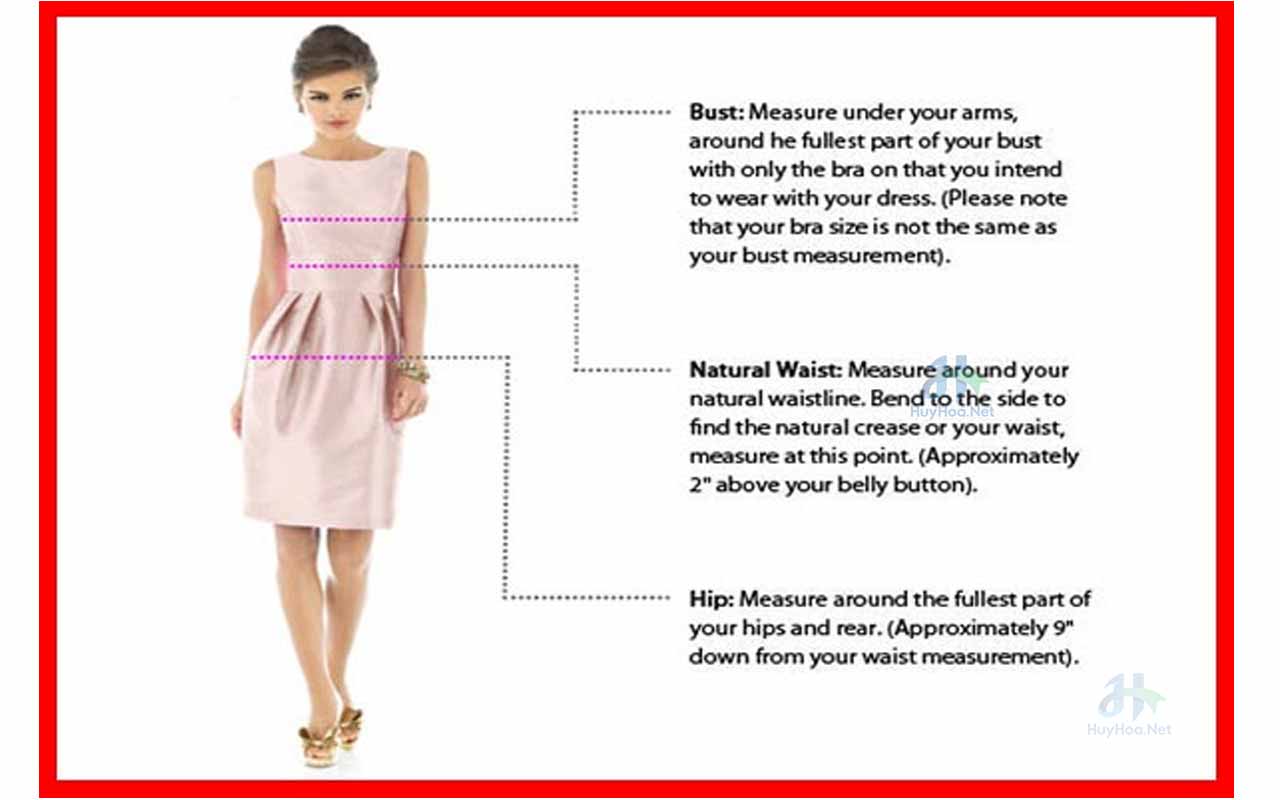
Another example: If is a woman who has a body height of 163cm – so the ideal body measurements for her can take to 36″ bust, 23″ waist, and 36″ hips.
X will certainly vary from person to person. For example maybe X=0.65, this is considered a curved shape. If X is greater than 0.8 (let’s say X=0.9), it will show a straighter shape, not too curved.
Let us discuss what is considered the perfect female body shape and how to attain that to be the best women figure.
To get an hourglass body shape, your waist-hip and waist-chest measurements must be no less than 9″. For an hourglass body shape, your hip measurement and bust measurement should be less than 9. Your waist should not be more than 1 inch apart and your waist should be at least 9 inches smaller than the other two.
You can learn more about this calculation by searching on Google. To search, you can try searching with “ideal shape”, “body proportions” (for women), or just general shapes like hourglass body shape, body shape pears, etc.
One note when measuring 3 rounds is to measure when naked. That is the measurement without wearing any clothes, including bras. For example, a bust of 36 would have these bra sizes: 28G, 30E, 32D, 34B, or 36AA.
If a woman is wearing a size 36 bra and has DD breasts, her measurements are definitely not 36 for the bust but 41. And if the rest of her measurements are 24 (waist) – 36 (hips), then this proves she has an inverted triangle body shape, not an hourglass because her bust is 5 inches larger than her hips. 41 (bust measurement) – 36 (hip measurement) = 5 Inches.
Body type calculator
These are some free body-type calculator website
Body Type Calculator
Link: https://www.calculator.net/body-type-calculator.html
The Body Type Calculator is designed for females to find their “body shape,” which can be used for getting targeted outfit Ideas.
Even though there is some research linking certain body shapes with some health risks, the body shape result of this calculator is not intended to be a serious indication of health or an ideal that must be met.
Instead, the waist-hip ratio, which is also shown in the results of this calculator, is a better indicator of health.
This free body type calculator estimates body type based on provided measurements of bust, waist, and hip size and their relation to societal conventions.
Body Shape Calculator
Link: https://calculator-online.net/body-shape-calculator/
This free body shape calculator allows you to find out your body type on provided measurements of chest, hip, high hip, and waist and also a waist-hip ratio.
Omni Calculator
Link: https://www.omnicalculator.com/health/body-shape
The body shape calculator determines your body type based on your measurements.
Perfect measurements for women
Everyone has different measurements and metrics. In some sports, for example, women often appear a bit masculine, but in general, women who are good at a sport have the ideal body for that sport.
Women who play basketball or volleyball are usually tall. Women who play gymnastics are usually shorter than average. Surfers often have short legs and strong muscles. Athletes are usually skinny. Whatever your shape is, it all has a reason for its existence.
As you can see, exercise and diet will greatly affect your body measurements. I would like to summarize some parameters in the table below for your reference.
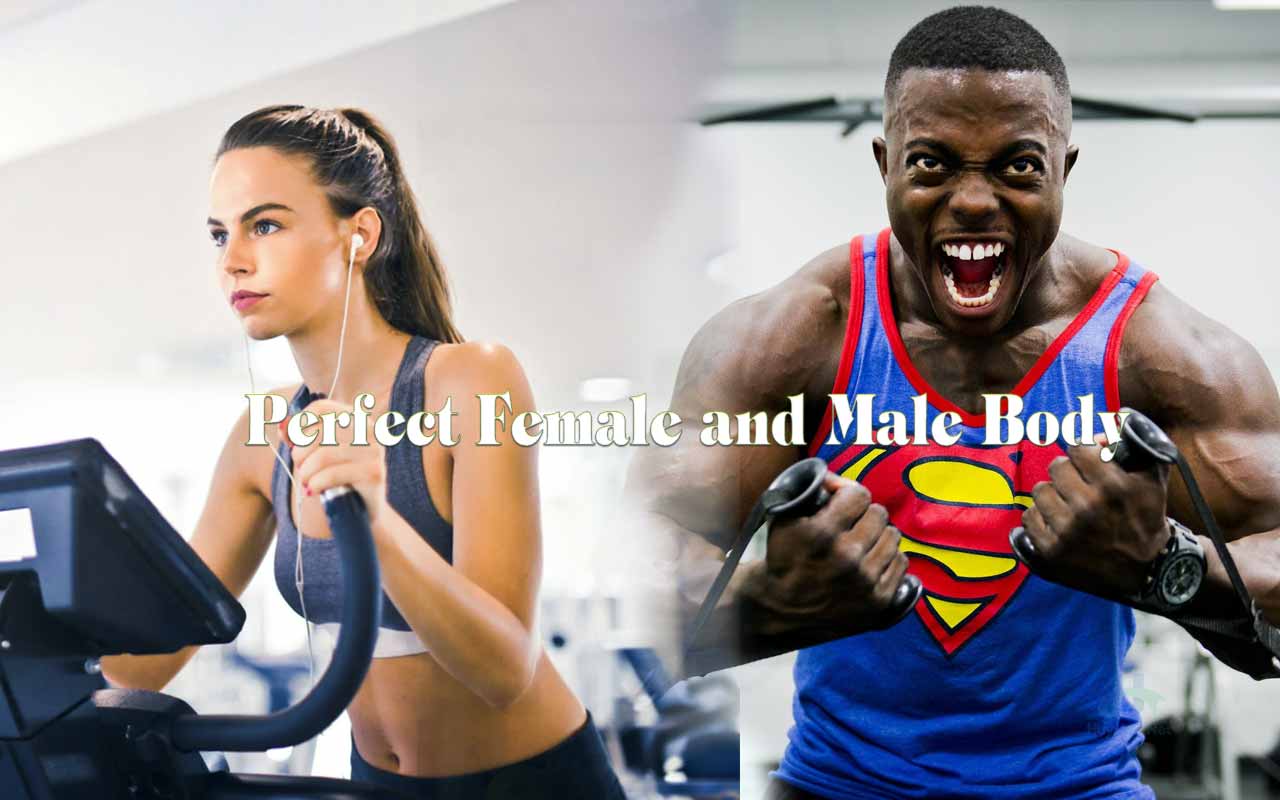
Perfect measurements for women:
| BUST | WAIST | HIPS | WHR* | HT (IN) | WT (POUNDS) | BMI** | |
| MIN | 30 | 21.5 | 32 | .611 | 61.0 | 99.8 | 16.83 |
| MAX | 37 | 27 | 37.5 | .781 | 70.9 | 144.7 | 22.27 |
| RANGE | 7 | 5.5 | 5.5 | .17 | 9.8 | 44.9 | 5.44 |
| AVE | 34.8 | 24 | 35.4 | .678 | 66.5 | 120.9 | 19.16 |
Woman Body Measurement Chart
Average Height and Weight Chart for Teenage Girls
| Age | Average Height in Inches | Average Weight in Pound |
| 12 – 13 years | 60 – 63 | 95 – 105 |
| 14 – 15 years | 63 – 64 | 105 – 115 |
| 16 – 17 years | 64 | 115 – 120 |
| 18 – 20 years | 64 | 125 – 130 |
Average Height and Weight Chart for Adult Women (Source)
| Height | Weight | ||
|---|---|---|---|
| Normal | Overweight | Obese | |
| 4′ 10″ | 91 to 118 lbs. | 119 to 142 lbs. | 143 to 186 lbs. |
| 4′ 11″ | 94 to 123 lbs. | 124 to 147 lbs. | 148 to 193 lbs. |
| 5′ | 97 to 127 lbs. | 128 to 152 lbs. | 153 to 199 lbs. |
| 5′ 1″ | 100 to 131 lbs. | 132 to 157 lbs. | 158 to 206 lbs. |
| 5′ 2″ | 104 to 135 lbs. | 136 to 163 lbs. | 164 to 213 lbs. |
| 5′ 3″ | 107 to 140 lbs. | 141 to 168 lbs. | 169 to 220 lbs. |
| 5′ 4″ | 110 to 144 lbs. | 145 to 173 lbs. | 174 to 227 lbs. |
| 5′ 5″ | 114 to 149 lbs. | 150 to 179 lbs. | 180 to 234 lbs. |
| 5′ 6″ | 118 to 154 lbs. | 155 to 185 lbs. | 186 to 241 lbs. |
| 5′ 7″ | 121 to 158 lbs. | 159 to 190 lbs. | 191 to 249 lbs. |
| 5′ 8″ | 125 to 163 lbs. | 164 to 196 lbs. | 197 to 256 lbs. |
| 5′ 9″ | 128 to 168 lbs. | 169 to 202 lbs. | 203 to 263 lbs. |
| 5′ 10″ | 132 to 173 lbs. | 174 to 208 lbs. | 209 to 271 lbs. |
| 5′ 11″ | 136 to 178 lbs. | 179 to 214 lbs. | 215 to 279 lbs. |
| 6′ | 140 to 183 lbs. | 184 to 220 lbs. | 221 to 287 lbs. |
| 6′ 1″ | 144 to 188 lbs. | 189 to 226 lbs. | 227 to 295 lbs. |
| 6′ 2″ | 148 to 193 lbs. | 194 to 232 lbs. | 233 to 303 lbs. |
| 6′ 3″ | 152 to 199 lbs. | 200 to 239 lbs. | 240 to 311 lbs. |
| 6′ 4″ | 156 to 204 lbs. | 205 to 245 lbs. | 246 to 320 lbs. |
| BMI | 19 to 24 | 25 to 29 | 30 to 39 |
Average Age and Weight Chart for Average American Women
| Age and Weight Chart for Women | |
| Age | Pounds |
| 20 – 29 | 132 |
| 30 – 39 | 144 |
| 40 – 49 | 149 |
| 50 – 59 | 158 |
| 60 – 69 | 152 |
Waist Measurement Chart for Women
Measurements will vary from country to country or across races. Because human genetics plays an important role in one’s body shape.
Another point is that hormones, especially female sex hormones, determine the distribution of fat in the body. A woman goes through many stages in her development, such as puberty, menstruation, pregnancy, childbirth, and menopause.
Regardless of race, women can change their body measurements based on proper diet and exercise. Below is a table of women’s waist measurements.
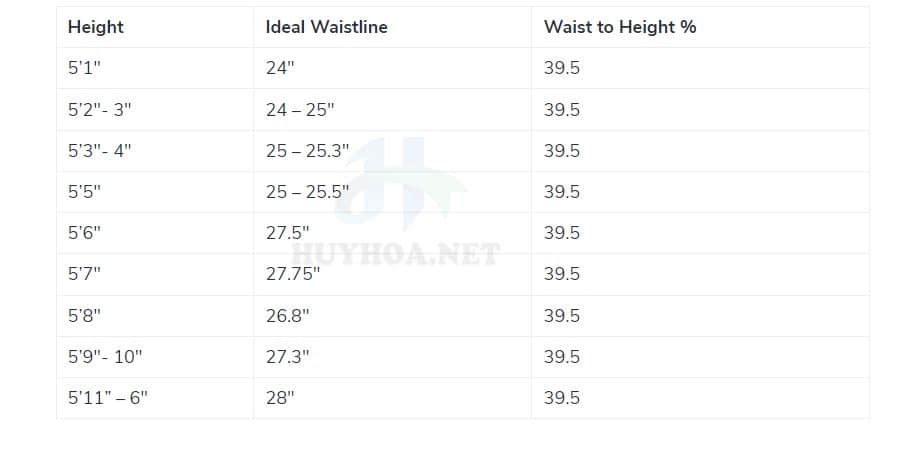
What are the ideal measurements for a woman?
For the best fit and health, your waist should be under 35 inches for women and less than 40 inches for men. However, waist size depends on your height, your race, and your ethnicity. If it’s greater than that, you may want to talk to your doctor about your next steps, including weight loss and a proper exercise regimen.
According to the Centers for Disease Control and Prevention, the average waist size for a woman in the United States is 38.7 inches (the average for all women 20 years of age and older). The average waist size for teen girls in the United States is 32.6 inches
For more information about body measurements for women, you can refer to the following figures. Here are some women’s measurement ideas by height.
Perfect figure size chart:
| No | Description | Extra-small (XS | Small (S) | Medium (M) | Large (L) | Extra-large (XL) |
|---|---|---|---|---|---|---|
| Sizes 2-20 | 2-4 | 6-8 | 10-12 | 14-16 | 18-20 | |
| 1 | Bust girth | 30 inches (76 cm) | 32 inches (81 cm) | 36 inches (91.5 cm) | 40 inches (102 cm) | 42 inches (107 cm) |
| 2 | Waist girth | 20 inches (51 cm) | 22 inches (56 cm) | 26 inches (66 cm) | 30 inches (76 cm) | 32 inches (81cm) |
| 3 | Hips girth | 30 inches (76 cm) | 32 inches (81 cm) | 36 inches (91.5 cm) | 40 inches (102 cm) | 42 inches (107 cm) |
| 4 | Shoulder Span | 14.5 inches (37 cm) | 15 inches (38 cm) | 16 inches (41 cm) | 17 inches (43 cm) | 17.5 inches (44.5 cm) |
| 5 | Inseam length | 23 inches (58.5 cm) | 24 inches (61 cm) | 26 inches (66 cm) | 28 inches (71 cm) | 29 inches (74 cm) |
| 6 | Thigh girth | 18 inches (46 cm) | 19 inches (48 cm) | 21 inches (53 cm) | 23 inches (58.5 cm) | 24 inches (61 cm) |
| 7 | Calf girth | 7.5 inches (19 cm) | 8 inches (20 cm) | 9 inches (23 cm) | 10 inches (25.5 cm) | 10.5 inches (27 cm) |
| 8 | Arm length | 26 inches (66 cm) | 27 inches (69 cm) | 29 inches (74 cm) | 31 inches (79 cm) | 32 inches (81 cm) |
| 9 | Armhole | 13.5 inches (34 cm) | 14 inches (36 cm) | 15 inches (38 cm) | 16 inches (41 cm) | 16.5 inches (42 cm) |
| 10 | Neck girth | 10.5 inches (27 cm) | 11.5 inches (29 cm) | 13.5 inches (34 cm) | 15.5 inches (39.5 cm) | 16.5 inches (42 cm) |
| 11 | Wrist girth | 5.90 inches (15 cm) | 6.0 inches (15 cm) | 6.15 inches (16 cm) | 6.35 inches (16 cm) | 6.5 inches (17 cm) |
| 12 | Body height | 62 inches (157.5 cm) | 64.5 inches (164 cm) | 67 inches (170 cm) | 69.5 inches (176.5 cm) | 72 inches (183 cm) |
Perfect body measurements for a 5’1 female
If you are a woman 5’1 tall, you must meet these measurements to be considered perfect: Bust measurement of 31 inches to 32.5 inches, a waist measurement of 21 inches to 22.5 inches, and hip measurements from 31 inches to 32.5 inches.
Perfect figure size for a 5’2” female
If you are female and 5’2″ tall then you should consider exercise and a proper diet to get this ideal body measurement: Bust measurement 31.5 inches to 32.5 inches, waist measurement 21.5 inches to 22.5 inches, hip measurements from 31.5 inches to 32.5 inches.
Perfect measurements for a woman 5’3
An ideal women’s body for a woman of 5’3 could be a bust measurement of 32.5 inches, a waist measurement of 22 inches, or a hip measurement of 32.5 inches.
Perfect figure size for 5’4
The ideal measurements for a woman between 5 feet 4 inches tall are bust 33 inches; 23-inch waist; 33-inch hips. Depending on race and ethnicity, these measurements may differ by about 0.5 inches.
Perfect body measurements for a 5’5 female
The size chart of ideal body measurements for a 5’5 female should be a Bust measurement of 33 inches to 35 inches, a waist measurement of 23 inches to 25 inches, and hip measurements from 33 inches to 35 inches.
Perfect body measurements for a 5’6 female
According to the results of polls and body type calculators, a woman 5 feet 6 inches tall is considered to have an ideal body when the following body measurements are met: A bust measurement of 33 inches to 35 inches, a waist measurement of 23 inches to 25 inches, hip measurements from 33 inches to 35 inches.
Perfect body measurements for a 5’7 female
If you are a woman 5 feet 7 inches tall, you must meet these measurements to be considered perfect: Bust measurement of 33 inches to 35 inches, a waist measurement of 23 inches to 25 inches, and hip measurements from 33 inches to 35 inches.
If you are still wondering what is the ideal body measurement for a woman? Watch the video below for the answer
Perfect Female Body Measurements According to Science
According to a study, a waist less than 26.5 inches is considered the most attractive. This is an attractive waist measurement for people between 160cm and 180cm.
By birth, every female is given a specific body type and skeleton measurements. Some may have a short height and bulky figure but may still look attractive. Others may be medium height-ed but still beautiful, there are yet others who are tall and lean and attract many. Almost all types of these body shapes may have likening ways.
A body shape that does not seem attractive to one may seem gorgeous to others. So there are no well-defined set patterns of rules regarding a perfect female body that would be everyone’s ideal.
However, a major consensus of most beauty experts and body measurement chart developers is on a measurement that is characterized by 36 inches wide bust, 26 inches wide waist, and 36 inches wide hops.
This is because almost every type of dress suits this set of measurements. So the widely agreed equation of perfect measurements for a woman should have a bust-waist-hip measurement of is 36-26-36 inches or 92-66-92 cm.
However, an interesting fact is that only 5% of women possess these measurements set as an ideal. Rest can only struggle to be as close to it as possible, but in the end, there would be many who do not look at these measurements as suitable for a body to define as a perfect female body, rather, to them, even a woman with 32″- 34″- 36″ maybe even more attractive than 36″- 26″- 36″.
So, the definition of perfection is highly subjective. It is based on your own perception, and even more than that, it is all about your feeling toward a lady.
You may not consider someone’s outward beauty in front of her inward ugliness or vice versa. There is nothing bad about trying to achieve perfect female body measurements, but you don’t have it, it is not a stigma or something to feel inferior about because when you think beautiful, you are beautiful.
According to a study published in ScienceDirect, the average hip size for women is between 80cm and 116cm. This hip size will be directly related to the size of the buttocks and bust. For example, a person with 32 inches waist would have a bust size of 40 inches and a hip size of 42.5 inches.
You can easily find out the corresponding bust, waist, and hip size based on the below women’s size chart and clothing size conversion table:
| Women’s Alpha Sizes | US Women’s Size | Bust in Inches | Waist in Inches | Hips in Inches |
|---|---|---|---|---|
| XS | 0 | 32 | 24 | 34.5 |
| XS | 2 | 33 | 25 | 35.5 |
| S | 4 | 34 | 26 | 36.5 |
| S | 6 | 35 | 27 | 37.5 |
| M | 8 | 36 | 28 | 38.5 |
| M | 10 | 37 | 29 | 39.5 |
| L | 12 | 38.5 | 30. 5 | 41 |
| L | 14 | 40 | 32 | 42.5 |
| XL | 16 | 41.5 | 33.5 | 44 |
| XL | 18 | 43 | 35 | 45.5 |
Looking at the bust – waist – hip and clothing size chart above, you can easily recognize:
A 28-inch waist woman is considered a normal size
A 29-inch waist woman is average, not too big but not too small either.
Women with a 30-inch waist are considered a bit fat
Women with a 32-inch waist, 33-inch waist to 35-inch waist are considered fat and large size
Healthy waist to height chart
Your waist measurement won’t reveal much about your health and any possible health risks. There are certain thresholds at which there is a greater risk of developing a number of health problems.
These threshold measurements are: Your waist-to-height ratio will help you determine if your waist size is a risk factor for health problems. Divide your waist measurement in inches by the height of your body in inches and multiply that number by 100.
Example:
Your waist-to-hip ratio is 47 percent if you are 67 inches (5′ 7″) tall and 32 inches wide. Here’s the math:
- 32 / 67 = 0.47
- 0.47×100 = 47 percent
This puts you in the healthy weight group. But, this doesn’t mean that you are healthy.
